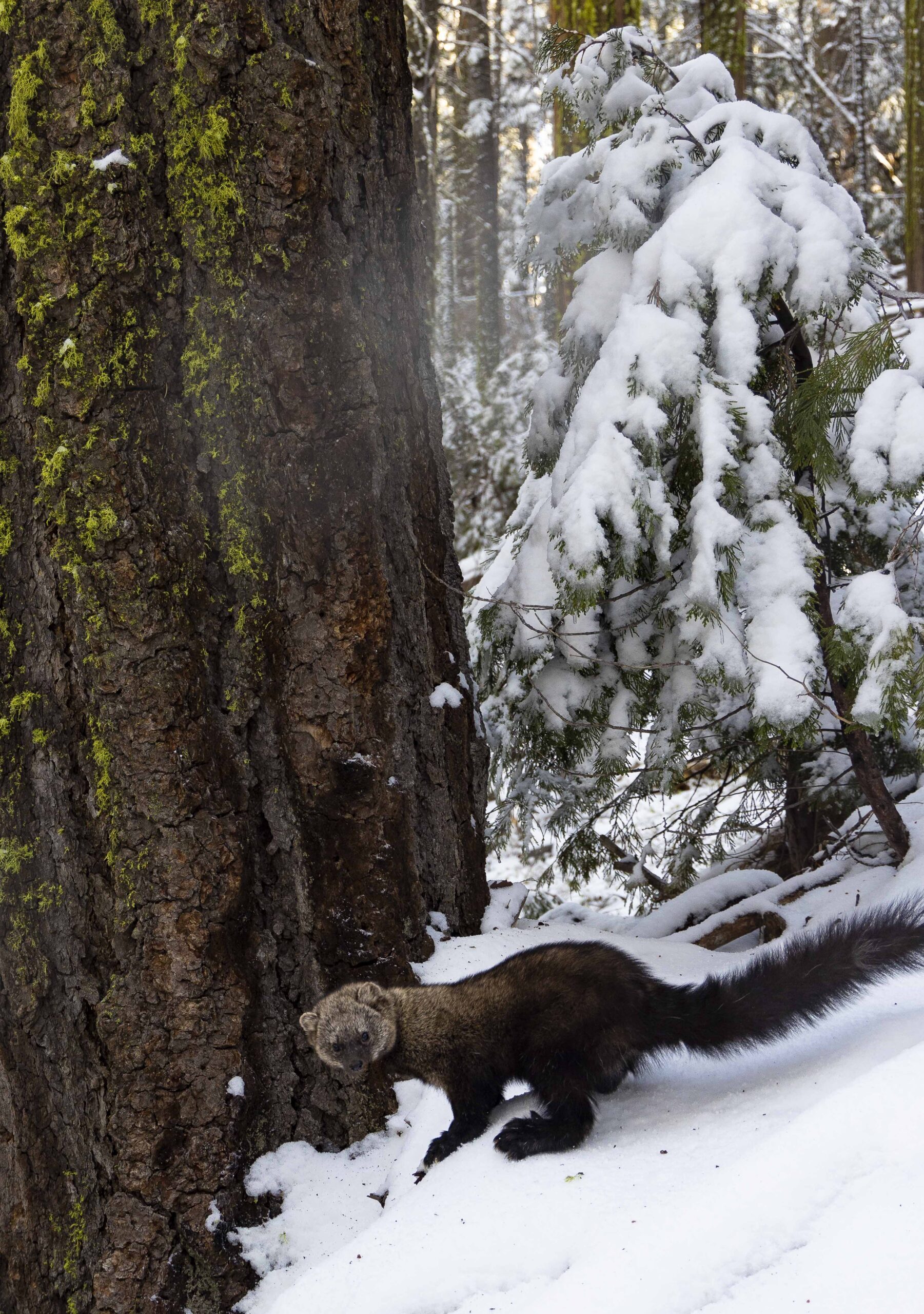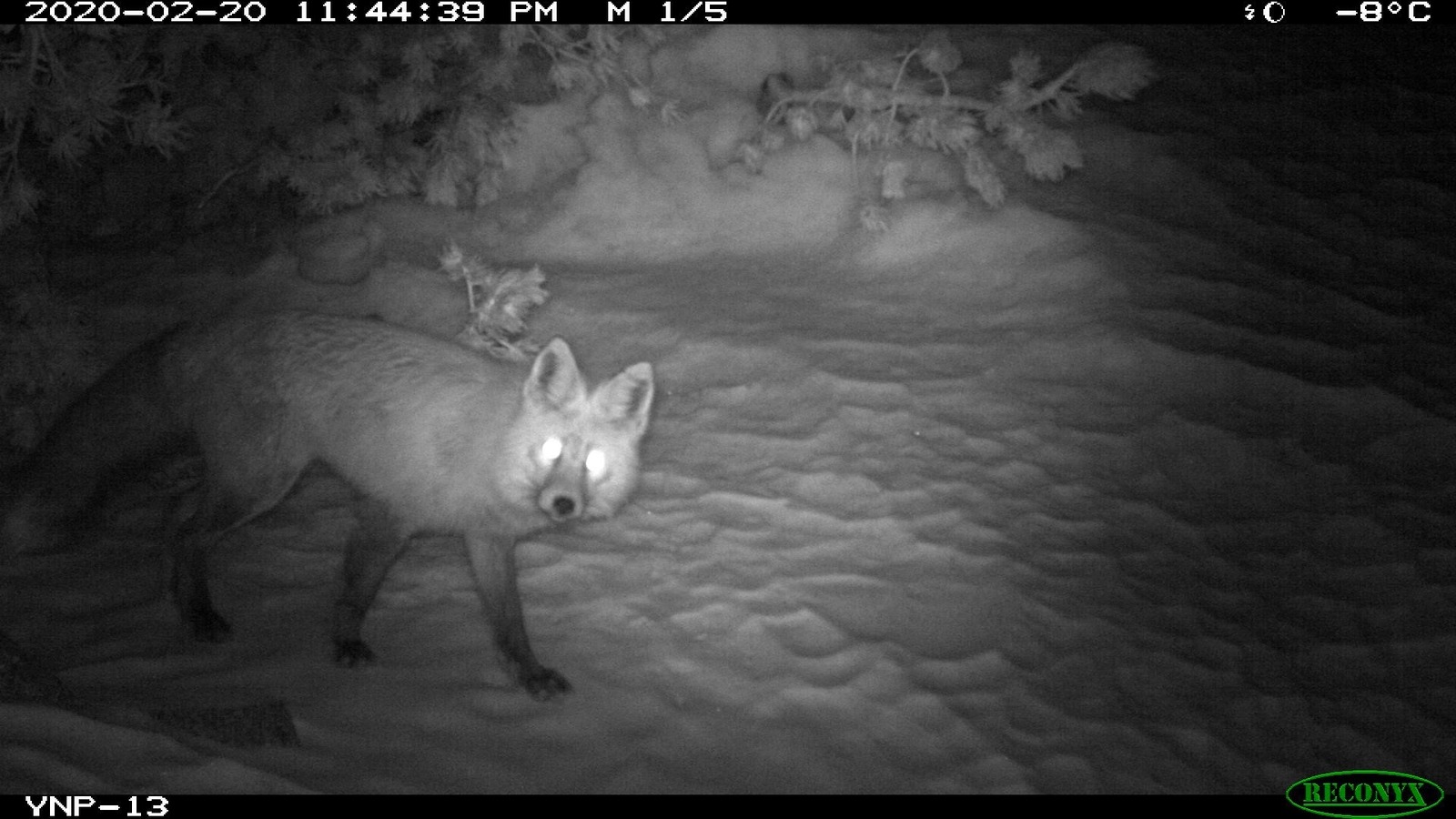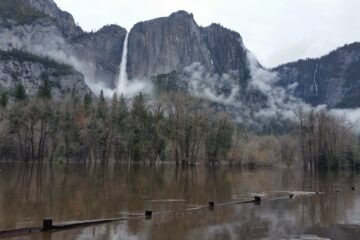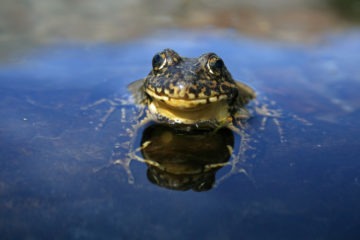Yosemite is home to a number of elusive carnivores. Learn more about their behavior in this project update.This story appears in the Fall/Winter edition of the Yosemite Conservancy Magazine, and was written by Megan Orpwood-Russell.
Surveying Fishers and Red Foxes
The past winter saw record-breaking snowfall in California, burying parts of the state in up to 15 feet of snow. In some instances, it lasted for several months.
While the unprecedented weather brought much-needed water to the region, it also presented challenges for native animals and the researchers who study them.
In 2020, fishers in the Southern Sierra Nevada were listed as federally endangered. Thanks to donor-funded research, park biologists are learning much-needed information about fishers in Yosemite by using data from GPS tracking collars. Park management uses the data to protect their existing denning habitat, identify important movement corridors, and improve the habitat long-term using prescribed fires.

A Pacific fisher surveys the snow at the base of her den tree. Part of the mustelid family, the population of the elusive Pacific fisher in Yosemite is endangered. Image: Robb Hirsch
During the winter, the crew persevered despite rockslides that shut down roads for multiple stretches, avalanches that blocked access to Highway 41, and record snowpack and rainfall that buried or obstructed the study sites. Even though field work was curtailed at various times for safety reasons, researchers were still able to capture, collar, and track 15 fishers; locate and monitor active fisher den trees; and witness (using remote-sensor cameras) several young kits leaving their dens to venture into the world for the first time.
“The past two years of fisher research have been incredible,” Yosemite wildlife biologist Sarah Stock says.
“We have some of the most valuable data we could ever have dreamed of getting. The GPS collars are giving us exact locations, and now we have thousands of data points. With these astonishing windows into the lives of fishers, we can see exactly where they go and where they do not go.”
Starting in mid-October, in the third consecutive season of collaring and tracking fishers, Stock and her team are eager to learn how Yosemite’s fisher population is faring after such an extreme winter.
“There is evidence that small mammal populations might have declined in some areas,” Stock says. “We are worried the fishers’ prey populations may have suffered mortalities from the winter.”
This year, researchers are collaborating with Oregon State University biostatisticians, Drs. Sean Matthews and Marie Martin, to estimate the number of fishers that live in Yosemite. This information will establish an important reference point for tracking future population trends.
With snow surveys in May 2023 showing the Merced River basin at 231% of normal and the Tuolumne River basin at 253%, the high alpine Sierra Nevada red fox will have experienced this historic winter at its most extreme.
The red fox was declared federally endangered by the U.S. Fish and Wildlife Service in 2021, with an estimated population of around 18 to 39 individuals across the entirety of their range in the Sierra Nevada. Because red foxes are so elusive and seldom seen, researchers survey them by placing remotely triggered cameras in travel corridors along mountain crests and analyzing their scats using genetic analysis. Throughout this project, surveys have revealed 64 red fox detections (55 camera detections and nine scat detections) in 19 different locations, always above the tree line. Of those 64 detections, 25 are from the past two years, suggesting the population might be starting to rebound. Researchers plan to continue collecting scats for DNA analysis in order to get a more precise population estimate in Yosemite.
The cameras that photograph the red foxes help piece together behavioral patterns and contribute to population assessments. Secured beneath rock cairns, the cameras are checked at least twice a year to ensure batteries are working, and a new scent lure is placed at the site to attract the foxes. Scat is also collected in red fox habitat, which is then analyzed to confirm species and unique individual.

A Sierra Nevada red fox captured on a remote camera in Yosemite. Image: NPS.
“With so many cameras buried underneath the snow and rendered dysfunctional this past winter, it’s hard to know what we missed!” Stock says. “We have just finished checking the 20 long-term red fox cameras that span Yosemite’s eastern boundary, and we are excited to report that a fox showed up at a new camera location this past winter. They have now appeared at 14 out of 20 long-term camera locations.”
And it isn’t just the red fox that was observed: In May of this year, a lone wolverine was spotted in Tuolumne, making it the second wolverine to be seen in the state in roughly 100 years.
Have you ever wanted to learn more about the research that is happening in Yosemite? Our Yosemite Field School programs offer an opportunity to understand the park ecosystem through in-depth guided excursions.



